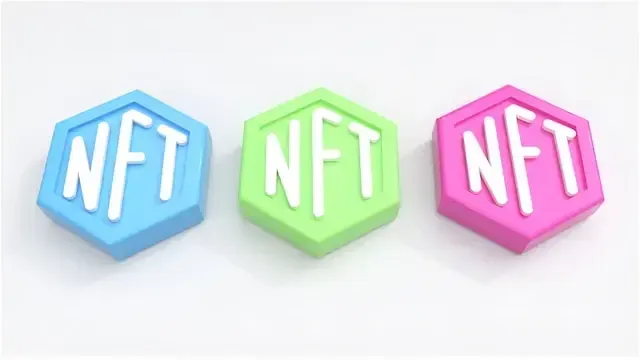We all have parts of ourselves that we hide from others and even from ourselves. These hidden parts are known as the shadow self. Understanding and embracing your shadow self can lead to personal growth and a better understanding of who you are. In this article, we will explore what the shadow self is, why it’s important to engage with it, and how to do so.
We all have parts of ourselves that we hide from others and even from ourselves. These hidden parts are known as the shadow self. Understanding and embracing your shadow self can lead to personal growth and a better understanding of who you are. In this article, we will explore what the shadow self is, why it’s important to engage with it, and how to do so.
What is the Shadow Self?
The shadow self is made up of the traits, desires, and emotions that we suppress or deny. These can include negative feelings like anger, jealousy, and fear, as well as positive qualities like creativity and ambition that we might not fully embrace. The concept was introduced by psychologist Carl Jung, who believed that integrating our shadow self is essential for achieving wholeness.
Defining the Darker Self and the Light Self
Everyone has both a darker self and a light self. The darker self includes the parts of our personality that we hide because they are considered unacceptable or negative. This might be anger, selfishness, or fear. The light self, on the other hand, consists of the traits that we show to the world and that are generally seen as positive, like kindness, generosity, and love.
Both the darker self and the light self are part of who we are. By understanding and integrating both, we can become more authentic and whole. This process is not about becoming perfect but about accepting all parts of ourselves.
How the Darker Self Manifests in Women
In women, the darker self can manifest in various ways. Societal expectations often pressure women to be nurturing, kind, and selfless, which can lead to suppressing traits like assertiveness, anger, and ambition. When these traits are not acknowledged, they can show up in less healthy ways, such as passive-aggressiveness or burnout.
For example, a woman who suppresses her anger might find herself becoming resentful or feeling overwhelmed. Another woman might hide her ambition to avoid being seen as too aggressive, which can lead to frustration and unfulfilled potential. Understanding and embracing these parts of the self can lead to a more balanced and fulfilling life.
Why Engage with Your Shadow Self?
- Achieving Authenticity
Embracing your shadow self allows you to embrace all parts of who you are, not just the socially acceptable ones. This leads to greater authenticity in how you live and relate to others. When you accept and integrate aspects of yourself that you may have previously ignored or suppressed, you align more closely with your true values and desires. This authenticity fosters a deeper sense of self-confidence and self-respect, as you no longer feel the need to hide or conform to external expectations.
- Enhancing Self-Awareness
Exploring your shadow self helps you understand the root causes of your behaviors and emotions. This self-awareness allows for more conscious decision-making and emotional intelligence. By recognizing and acknowledging your hidden fears, insecurities, and motivations, you gain deeper insights into why you think and act the way you do. This increased self-awareness empowers you to make choices that are more aligned with your core values and aspirations, rather than being driven by unconscious impulses or societal pressures.
- Improving Relationships
Integrating your shadows reduces the tendency to project your insecurities onto others. This fosters healthier and more genuine relationships based on acceptance and empathy. When you confront and accept your own vulnerabilities and imperfections, you become less defensive and judgmental towards others. This openness allows you to connect more authentically with people, fostering trust and mutual understanding in your relationships. It also enables you to offer genuine empathy and support to others, as you recognize and appreciate the complexity of human emotions and experiences.
- Unleashing Creativity:
Many of our hidden talents and creative impulses reside in the shadow self. By embracing these aspects, you can unlock new avenues of creativity and innovation in your personal and professional life. Creativity often thrives on exploring unconventional ideas and perspectives, which may be suppressed or overlooked in favor of more conventional approaches. Embracing your shadow self allows you to tap into this reservoir of creativity, enabling you to approach challenges with fresh insights and imaginative solutions. This creative freedom not only enhances your fulfillment but also enriches your contributions to your work and community.
- Boosting Emotional Resilience
Engaging with your shadow self builds emotional resilience by confronting and processing difficult emotions. This leads to greater inner strength and adaptability in facing life’s challenges. Resilience is the ability to bounce back from setbacks and adversity, and it is cultivated through facing and overcoming difficult experiences. By embracing your shadow self, you develop the courage and emotional fortitude to confront your fears and uncertainties. This process builds resilience, enabling you to navigate life’s ups and downs with greater calmness and confidence. It also fosters a deeper sense of self-compassion and self-trust, as you learn to rely on your inner resources to overcome obstacles and setbacks.
How to Engage with Your Shadow Self
Engaging with your shadow self involves several steps. It’s about self-reflection, acceptance, and integration. Here’s how you can start:
- Self-Reflection
Begin by reflecting on your thoughts, feelings, and behaviors. Pay attention to moments when you feel triggered or overly emotional. These reactions can provide clues about your shadow self. Journaling can be a helpful tool for this process. Write down your thoughts and feelings without censoring yourself. This can help you identify patterns and understand what parts of yourself you might be repressing.
- Identify Your Shadows
Once you have a better understanding of your thoughts and feelings, start identifying your shadows. These are the traits and emotions you tend to hide or deny. Ask yourself questions like, “What do I dislike about myself?” or “What traits do I criticize in others?” Often, the things we judge in others are reflections of what we hide in ourselves.
- Embrace with Compassion
Approach your shadow self with compassion and curiosity. Understand that these aspects are a natural part of being human. Instead of judging yourself, try to understand where these traits come from. This might involve looking at your past and understanding how your experiences have shaped you. Remember, the goal is not to get rid of these traits but to integrate them healthily.
- Express and Integrate
Find ways to express and integrate your shadow self. This could be through creative outlets like art, writing, or dance. It could also involve setting boundaries, asserting yourself, or pursuing goals that you’ve previously suppressed. Therapy can also be a valuable tool in this process. A therapist can help you navigate your shadow self and integrate it into your conscious self.
- Seek Support
Engaging with your shadow self can be challenging. Don’t hesitate to seek support from friends, family, or a professional. Having someone to talk to can provide comfort and perspective. Support groups can also be a great way to connect with others who are on a similar journey.
The Benefits of Shadow Integration
Integrating your shadow self offers numerous benefits. It leads to greater self-awareness, emotional resilience, and personal growth. Here’s how:
- Wholeness and Integration
By integrating your shadow self, you achieve a sense of wholeness. You accept all parts of yourself, not just the ones you like. This leads to a more balanced and fulfilling life. When you acknowledge and embrace your shadow, you are no longer at war with yourself. This internal harmony allows you to navigate life with a greater sense of peace and coherence. You understand that every aspect of yourself has value and purpose, even the parts that you once tried to hide. This holistic approach to self-acceptance fosters inner stability and reduces internal conflict, leading to a more harmonious and satisfying existence.
- Personal Empowerment
Embracing your shadows gives you power over them. Instead of being controlled by your suppressed traits and emotions, you take charge of them. This leads to greater self-confidence and personal empowerment. When you face and integrate your shadow self, you no longer fear these parts of yourself. You become more aware of your triggers and can manage them effectively. This self-awareness and control translate into personal empowerment, as you are no longer driven by unconscious fears and insecurities. You stand firm in your identity, knowing that you have the strength and capability to handle whatever comes your way. This empowerment enhances your ability to set and achieve goals, assert your boundaries, and pursue your passions with confidence.
- Enhanced Relationships
Integrating your shadows improves your relationships. You become more understanding and empathetic, both towards yourself and others. This leads to healthier and more genuine connections. When you accept your flaws and vulnerabilities, you become more compassionate towards others. You recognize that everyone has a shadow side and that this is a natural part of being human. This empathy allows you to connect with others on a deeper level, fostering trust and mutual respect. You are less likely to project your insecurities onto others, which reduces conflicts and misunderstandings. Instead, you approach relationships with an open heart and mind, creating a supportive and nurturing environment for yourself and those around you.
- Creative and Professional Growth
By embracing your hidden talents and creative impulses, you unlock new avenues for growth. This can lead to personal fulfillment and professional success. Creativity often thrives in the shadows, where unconventional ideas and perspectives reside. By integrating your shadow self, you tap into this wellspring of creativity. You allow yourself to explore and express ideas that you might have previously suppressed. This creative freedom can lead to innovative solutions and fresh perspectives in your personal and professional life. In a work setting, embracing your shadow can enhance problem-solving abilities, inspire new projects, and drive career advancement. On an individual level, it can lead to discovering new hobbies, interests, and talents, enriching your life and contributing to your overall sense of fulfillment.
Conclusion
Engaging with your shadow self is a courageous and transformative journey. It involves understanding, accepting, and integrating the hidden parts of your personality. By doing so, you achieve greater authenticity, self-awareness, and emotional resilience. Embracing your shadow self leads to personal empowerment, enhanced relationships, and creative growth. Remember, the goal is not to become perfect but to become whole. Embrace your shadows—they are a vital part of who you are and hold the keys to unlocking your fullest potential.


























